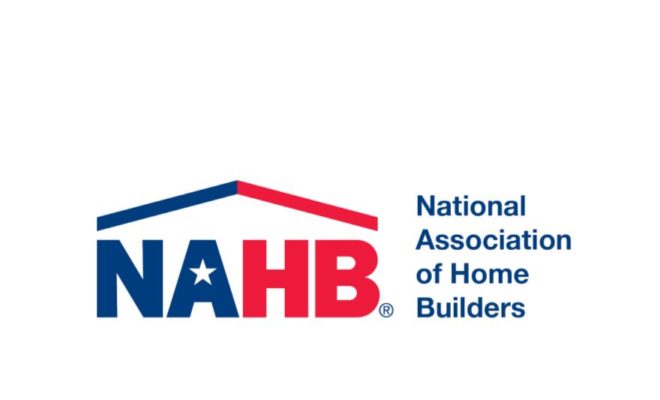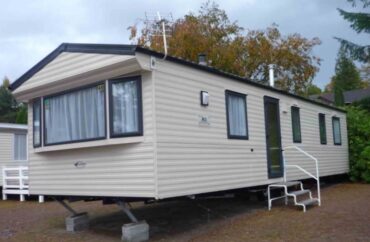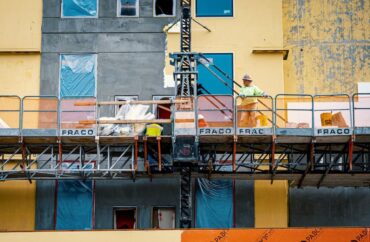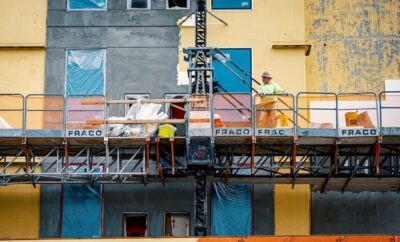
NAHB: Housing Affordability Hits Record Low
According to the NAHB, only 38.1% of new and existing houses sold in the fourth quarter were affordable to families earning the national median income.
Housing affordability posted three consecutive quarterly declines in 2022, mirroring a steep rise in mortgage rates that began in early 2022 and coupled with ongoing building material supply chain bottlenecks that increased construction costs, and now stands at its lowest level since the National Association of Home Builders (NAHB) began tracking it on a consistent basis in 2012.
However, a recent decline in mortgage rates over the last two months suggests that the cycle’s falling affordability circumstances may have reached their low point.
According to the NAHB/Wells Fargo Housing Opportunity Index (HOI), only 38.1% of new and existing houses sold between the beginning of October and the end of December were affordable to households earning $90,000 in the United States.
This is the third consecutive quarterly low for housing affordability during the Great Recession, following the prior lows of 42.2% in the third quarter and 42.8% in the second quarter.
“Rising mortgage rates, supply chain disruptions, elevated construction costs and a lack of skilled workers and lots all contributed to a declining housing market and worsening affordability conditions going back to the second quarter of last year,” NAHB Chairman Alicia Huey, a custom home builder from Birmingham, Alabama, stated.
“But we are anticipating a better affordability climate in the months ahead, with mortgage rates already posting a modest drop since the beginning of the year and expectations that the Federal Reserve will end its latest string of interest rate hikes by the end of the first quarter.”
“With mortgage rates anticipated to continue to trend lower later this year, affordability conditions are expected to improve, and this will increase demand and bring more buyers back into the market,” said NAHB Chief Economist Robert Dietz.
“Ultimately, the best way to reduce housing costs is for policymakers to put into place the right policies that will allow builders to produce more affordable housing by fixing broken supply chains, easing excessive regulations and ensuring sufficient liquidity in the housing market.”
While the HOI reveals that the national median home price declined to $370,000 in the fourth quarter, it is still the third-highest median price in the series’ history, behind the $380,000 price recorded in the third quarter and the all-time high of $390,000 in the second quarter.
Meanwhile, average mortgage rates reached a series high of 6.80% in the fourth quarter, exceeding the previous high of 5.72% in the third quarter.
The Most and Least Affordable Markets in the Fourth Quarter
Indianapolis-Carmel-Anderson, Ind., was the nation’s most affordable major housing market, defined as a metro with a population of at least 500,000. There, 75.9% of all new and existing homes sold in the fourth quarter were affordable to families earning the area’s median income of $94,100.
Top five affordable major housing markets:
- Indianapolis-Carmel-Anderson, Ind.
- Rochester, N.Y.
- Pittsburgh, Pa.
- Toledo, Ohio
- Dayton-Kettering, Ohio
Meanwhile, Bay City, Michigan, was named the nation’s most cheap small market, with 88.5% of homes sold in the fourth quarter costing less than $74,800.
Top five affordable small housing markets:
- Bay City, Mich.
- Wheeling, W.Va.-Ohio
- Elmira, N.Y.
- Davenport-Moline-Rock Island, Iowa-Ill.
- Cumberland, Md.-W.Va.
For the ninth consecutive quarter, Los Angeles-Long Beach-Glendale, Calif., remained the nation’s least affordable metropolitan housing market. Only 2.2% of homes sold in the fourth quarter were accessible to families earning the area’s median income of $91,100.
Top five least affordable major housing markets—all located in California:
- Los Angeles-Long Beach-Glendale
- Anaheim-Santa Ana-Irvine
- San Diego-Chula Vista-Carlsbad
- San Francisco-San Mateo-Redwood City
- San Jose-Sunnyvale-Santa Clara
The Golden State also had the top five least inexpensive small home markets. Salinas, California, was at the absolute bottom of the affordability chart, with 5.0% of all new and existing homes sold in the fourth quarter being affordable to families earning the area’s median income of $90,100.
Top five least affordable small housing markets—all located in California:
- Salinas
- Santa Maria-Santa Barbara
- Napa
- San Luis Obispo-Paso Robles
- Santa Rosa-Petaluma






















